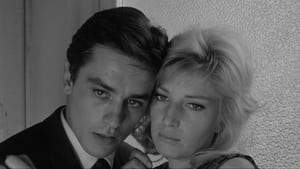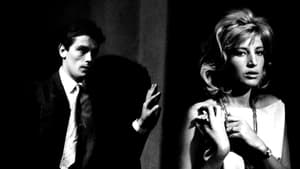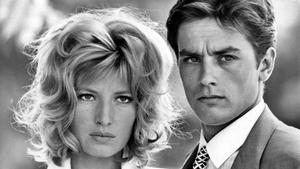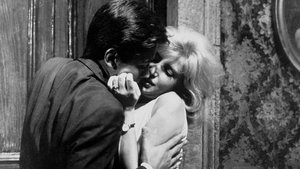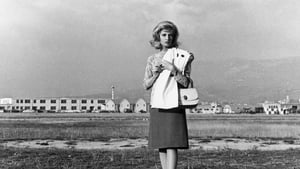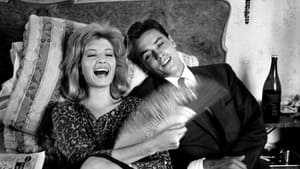Contact: [email protected]
Video Sources 0 Views

Synopsis
[ez-toc]






Introduction
In the realm of classic cinema, where black and white has long been a hallmark of storytelling, a daring experiment has emerged — the colorized version of L’Eclisse Colorized, a 1962 Italian masterpiece directed by the visionary Michelangelo Antonioni. This new rendition breathes fresh life into the classic, offering audiences a unique lens through which to appreciate the artistic vision of one of cinema’s maestros.
Key Takeaway: This article delves into the transformative process of colorization in old movies through a detailed exploration of L’Eclisse Colorized 1962. We will unravel the significance of this adaptation, examining its impact on the viewing experience while providing an overview of the film’s plot and storyline.
Read Media File Transfer Agreement: Terms and Conditions
Read FAQ
The Evolution of L’Eclisse Colorized: From Black and White to Color
Antonioni’s L’Eclisse Colorized is a pivotal piece in the director’s body of work, renowned for its visual poetry and exploration of existential themes. The addition of color to this classic raises questions about the preservation of artistic intent. Alain Delon and Monica Vitti’s performances, originally captured in the monochrome palette, are now thrust into the vivid spectrum of color, promising a renewed cinematic experience.
Key Takeaway: This section will provide a brief overview of L’Eclisse Colorized, emphasizing the importance of the film in Antonioni’s oeuvre. It will explore the director’s artistic vision and ponder how the colorization process may enhance or alter it. Delving into the performances of Alain Delon and Monica Vitti, we will assess their contributions to the film’s original success.
Exploring the Art and Science Behind Film Colorization
The decision to colorize old movies sparks debates about authenticity and the preservation of cinematic history. The colorization process applied to L’Eclisse Colorized 1962 involves sophisticated techniques to ensure visual quality and historical accuracy. Understanding the nuances of this process sheds light on the delicate balance between modernization and the preservation of film heritage.
Key Takeaway: This section will dissect the reasons behind colorizing old movies and the ongoing debate surrounding its impact on authenticity. By delving into the colorization process used for L’Eclisse Colorized 1962, including the advanced techniques employed, readers will gain insight into the efforts to maintain both visual quality and historical fidelity. Additionally, we’ll explore the crucial role of film restoration in preserving not only the original black and white films but also their colorized counterparts.
The Aesthetic Impact: Enhancing Mood and Narrative through Color
Colorization is not merely a technical process but an artistic choice that can profoundly affect the emotional and aesthetic dimensions of a film. In the case of L’Eclisse Colorized 1962, this shift from black and white to color opens new avenues for visual storytelling. By examining specific scenes and moments, we can uncover how color contributes to the overall mood and narrative, enhancing the viewer’s connection to the story.
Key Takeaway: This segment will explore the aesthetic impact of colorization on L’Eclisse Colorized. We’ll analyze how the use of color contributes to the film’s overall emotional experience and delves into specific examples where color is employed to convey themes and symbolism. This will highlight the transformative power of color in storytelling and its potential to breathe new life into classic narratives.
Cultural Reception and Controversy Surrounding L’Eclisse Colorized 1962
Examining the historical context of a film’s release often provides crucial insights into its reception. The original L’Eclisse debuted at the Cannes Film Festival, drawing attention for its innovative storytelling and visual prowess. Now, with the colorized version in the spotlight, we explore how audiences and critics of the time responded to this cinematic evolution.
Key Takeaway: This section will delve into the cultural reception and controversy surrounding L’Eclisse Colorized 1962. By examining the film’s original premiere at Cannes, we can understand how it was initially received and then transition to the contemporary response to the colorized version. This will provide a comprehensive view of the film’s journey from its debut to its reimagined form and the impact it has had on cinematic conversations.
The Timeless Appeal of L’Eclisse Colorized: A Case for Preserving the Original Vision
While colorization offers a new perspective on old movies, it also raises questions about preserving the integrity of the original artistic vision. L’Eclisse in its black and white form is a testament to Antonioni’s vision and the cinematic language of its time. This section makes a case for appreciating the original, despite the allure of the colorized edition.
Key Takeaway: This part of the article will argue for the preservation of the original artistic vision in L’Eclisse. It will highlight the importance of maintaining the black and white version as a representation of Antonioni’s intent and the cinematic language of the era. While acknowledging the value of colorization as a creative reinterpretation, the emphasis will be on respecting the historical context and artistic integrity of the filmmakers.
Conclusion
Reiterating the unique position of L’Eclisse Colorized 1962 in Michelangelo Antonioni’s trilogy, this section summarizes the key points discussed throughout the article. It emphasizes the film’s contribution to the ongoing discussion on film colorization and encourages readers to explore both the black and white and color versions of L’Eclisse to fully appreciate the different artistic choices made.
Key Takeaway: This conclusion will underscore the enduring legacy of L’Eclisse and its place in cinematic history. Furthermore, it will mention the acclaimed writer Haruki Murakami’s connection to L’Eclisse and how his work echoes its themes, providing an intriguing link between cinema and literature. The article will sign off by inviting readers to engage with the colorized version as a unique lens through which to view a cinematic classic.


